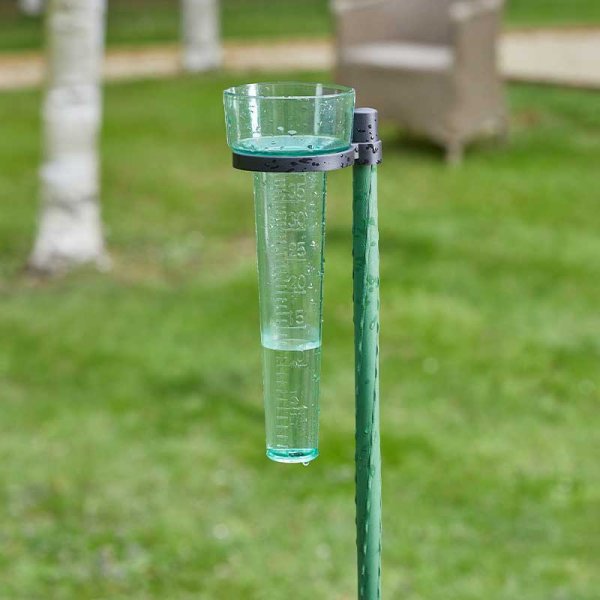Revealing the Scientific Research Behind Rain Evaluates: How These Tools Play a Crucial Function in Environment Research and Ecological Monitoring
Rainfall assesses, relatively basic devices, hold a profound relevance in the world of climate study and environmental monitoring. These plain instruments silently accumulate one of nature's most important components-- rainfall. Behind their unpretentious facade lies a complicated science that is crucial for comprehending the dynamics of our atmosphere. As we peel back the layers of this scientific veil surrounding rain gauges, we uncover a world where precision, data accuracy, and precise monitoring converge to introduce a deeper understanding of our changing climate and its influence on the planet.
Significance of Rainfall Gauges
Rainfall evaluates play an important function in monitoring and measuring rainfall degrees, offering essential information for climate study and analysis. These tools are basic in evaluating the amount of rainfall that takes place in a certain location over a particular period. By measuring and accumulating rain, rainfall determines deal valuable understandings right into the distribution and intensity of precipitation, helping meteorologists, hydrologists, and climatologists in recognizing weather patterns and fads.
One of the crucial reasons rainfall determines are essential is their ability to offer exact and local information. Unlike satellite or radar-based dimensions, which provide broader monitorings, rain evaluates deal precise details certain to the place where they are placed. This localized data is crucial for various applications, including flooding projecting, dry spell surveillance, and water source administration. Additionally, long-term information collected from rain assesses helps in examining environment modification impacts and patterns, adding substantially to clinical research and decision-making processes. Basically, rainfall gauges serve as vital tools in the area of weather forecasting and environmental science, playing a critical duty in advancing our understanding of weather condition and environment dynamics.
Types of Rain Scales

Functionality and Procedure
In the world of climate study and meteorological studies, the performance of rain evaluates depend on their detailed functionality and precise operational mechanisms. Rain determines are designed to properly determine the quantity of precipitation that drops over a details location throughout a collection duration. These tools commonly contain a funnel that collects rain and networks it into a measuring tube. The gauging tube is noted with calibrated dimensions that enable for the specific quantification of rainfall.
The capability of rainfall gauges is based on the principle of measuring and collecting rainwater in a standard manner. This accumulated information is essential for understanding neighborhood weather condition patterns, tracking long-lasting climate fads, and assessing ecological influences. To make certain exact measurements, rainfall gauges requirement to be strategically put in open areas away from obstructions such as buildings or trees that can hinder the collection procedure.
The operational aspect of rain determines entails routine upkeep to protect against debris accumulation, calibration checks to maintain dimension precision, and information videotaping for analysis (rain gauge). In general, the functionality and procedure of rain determines are necessary for gathering trusted precipitation information vital to climate study and ecological monitoring
Function in Climate Study
Provided the crucial value of accurate precipitation dimensions in comprehending climate patterns and environmental impacts, the duty of rain gauges in environment study is important. Rain assesses offer important information for environment research study by measuring the amount of rainfall that tips over a certain location throughout an offered period. This data is important for monitoring long-lasting trends in rainfall patterns, assessing the influence of environment modification on rains distribution, and improving climate versions.

Climate scientists utilize information gathered from rainfall assesses to assess variants in precipitation levels, identify local environment fads, and evaluate the effectiveness of water resource monitoring techniques. By comparing historic precipitation information with current dimensions, scientists can find shifts in precipitation patterns, such as adjustments in the regularity or intensity of rains occasions. This info is important for comprehending how climate change is affecting rainfall characteristics and can help policymakers make notified decisions concerning adaptation and mitigation strategies.
Applications in Ecological Surveillance

In flood forecasting, rain scale data helps to track rains strength and distribution, permitting authorities to release prompt warnings and take essential steps to reduce flood threats (rain gauge). Dry spell surveillance relies on rain gauge data to examine dampness degrees in the soil and track precipitation deficits, helping in the recognition of drought-prone locations and the implementation of dry spell feedback methods
Furthermore, rainfall scale data plays an essential function in water resource monitoring by supplying info on water Visit This Link schedule and usage trends. This information Discover More is used to make educated decisions regarding water appropriation, conservation actions, and lasting water resource planning. In addition, in agriculture, rain gauge information aids farmers in maximizing irrigation schedules, plant option, and general farm administration techniques based upon regional precipitation patterns. In general, rain gauges are crucial devices in ecological tracking, using beneficial insights that add to informed decision-making and sustainable resource management.
Verdict
In conclusion, rain evaluates are necessary devices for gauging rainfall, providing useful information for environment study and ecological tracking. With various kinds and performances, rainfall determines play an important duty in comprehending precipitation patterns and their effect on the setting. By properly determining rainfall, these gadgets add to the development of clinical expertise and help in making informed decisions related to water source administration and disaster readiness.
Rain assesses play an important duty in tracking and determining precipitation degrees, offering necessary data for environment study and analysis. The standard rain scale, recognized as the "tipping container" gauge, is one of the most frequently made use of tools. Ultrasonic rain assesses use audio waves to detect the presence of rainfall, offering real-time information on precipitation degrees.Climate scientists utilize information accumulated from rainfall determines check out here to assess variations in precipitation levels, identify local climate patterns, and assess the effectiveness of water source monitoring strategies.In final thought, rain gauges are vital devices for determining rainfall, providing important information for climate research and ecological surveillance.